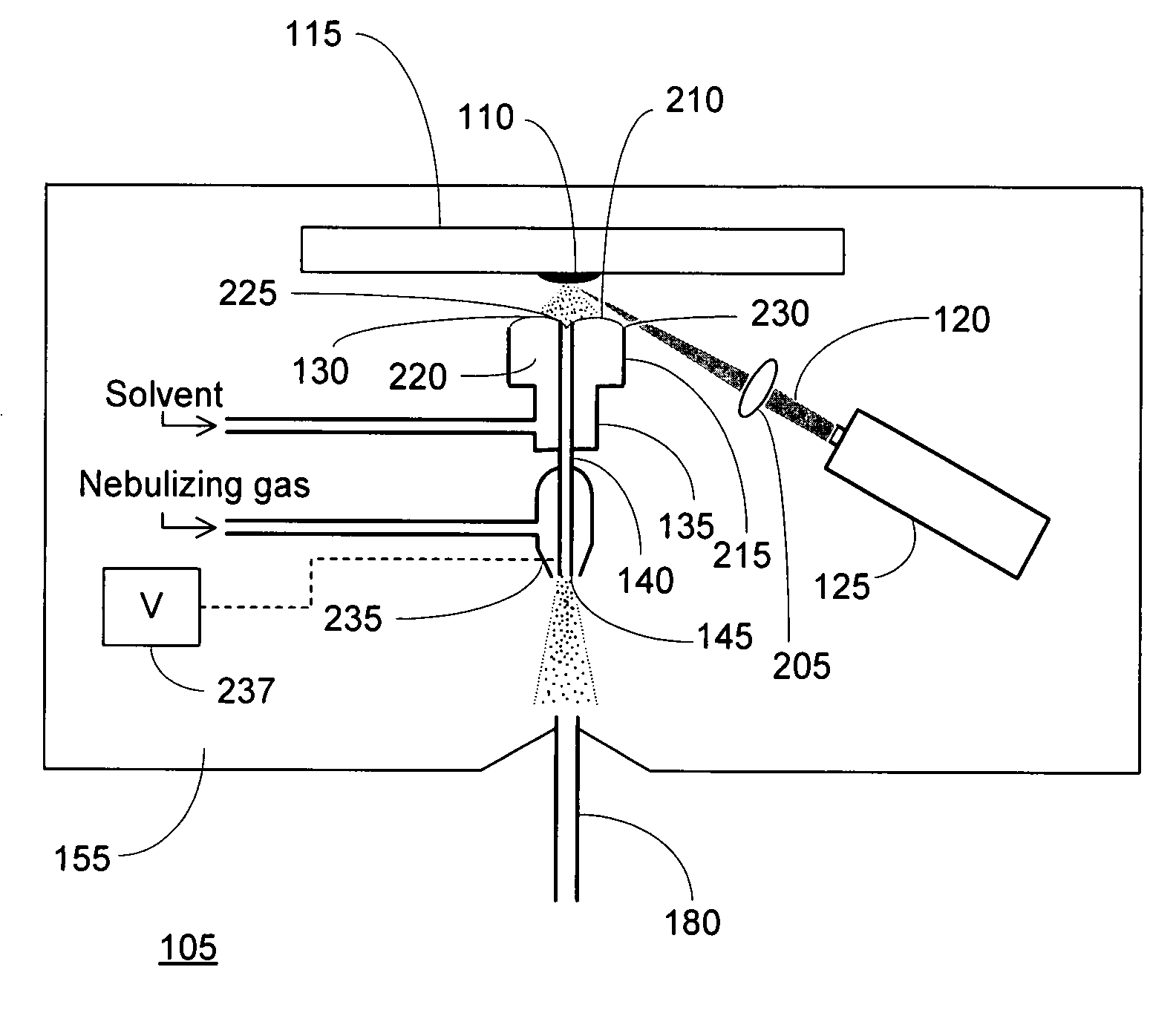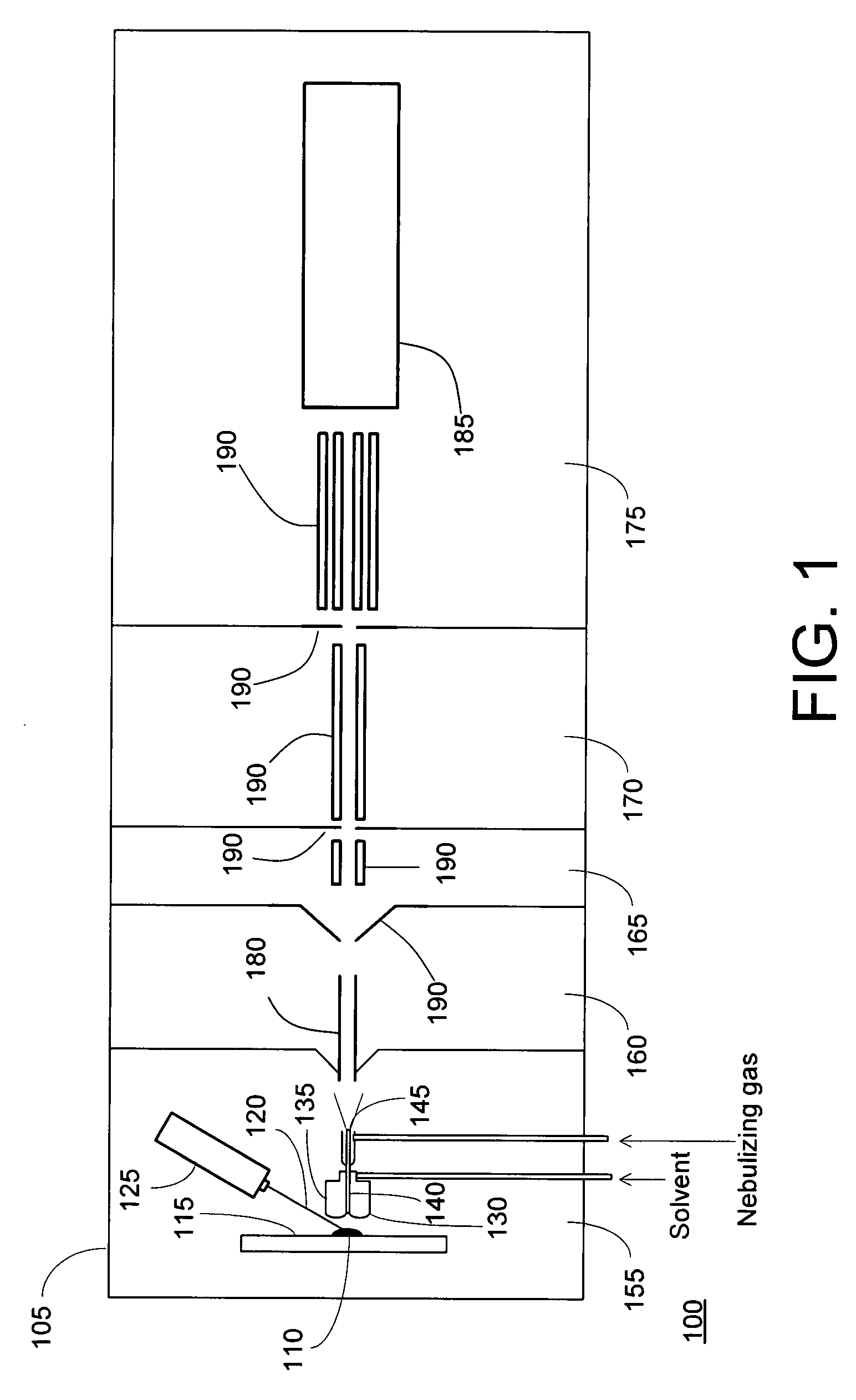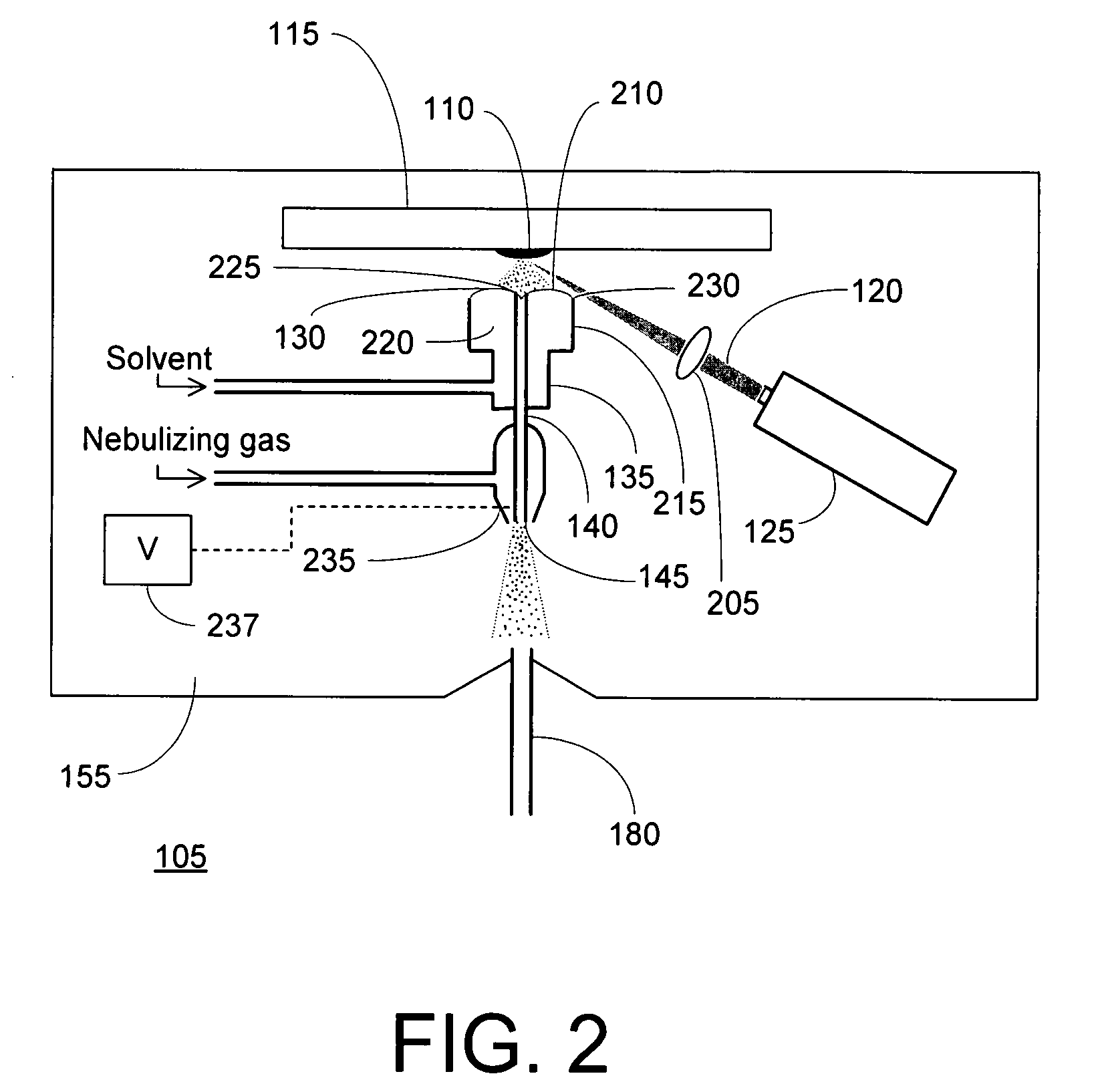Laser desorption - electrospray ion (ESI) source for mass spectrometers
a mass spectrometer and electrospray ion technology, applied in the direction of instruments, particle separator tube details, separation processes, etc., can solve the problems of reducing the analytical accuracy of large biomolecules
- Summary
- Abstract
- Description
- Claims
- Application Information
AI Technical Summary
Benefits of technology
Problems solved by technology
Method used
Image
Examples
Embodiment Construction
[0013]FIG. 1 is an overall schematic depiction of a mass spectrometer 100 utilizing a laser desorption-electrospray ion (LD-ESI) source 105 in accordance with an illustrative embodiment of the invention. A condensed-phase (solid or liquid) sample 110 is disposed on a sample support 115 and aligned with a radiation beam 120 emitted by a radiation source, such as laser 125. Irradiation of the sample causes analyte molecules to be desorbed from the surface. At least a portion of the desorbed analyte molecules contact a free surface of a solvent volume 130 held in close proximity to sample 110 by retaining structure 135 and are absorbed into solution. The solution containing the analyte molecules is drawn through an outlet passageway defined by central tube 140 and is conveyed therethrough to spray orifice 145. The central tube 140 (or the distal portion thereof) is maintained at an appropriate potential relative to other elements within ionization chamber 155 (the interior of which wil...
PUM
 Login to View More
Login to View More Abstract
Description
Claims
Application Information
 Login to View More
Login to View More - R&D
- Intellectual Property
- Life Sciences
- Materials
- Tech Scout
- Unparalleled Data Quality
- Higher Quality Content
- 60% Fewer Hallucinations
Browse by: Latest US Patents, China's latest patents, Technical Efficacy Thesaurus, Application Domain, Technology Topic, Popular Technical Reports.
© 2025 PatSnap. All rights reserved.Legal|Privacy policy|Modern Slavery Act Transparency Statement|Sitemap|About US| Contact US: help@patsnap.com



